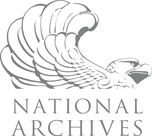 Visor de contenido web
Visor de contenido web
Acceptance Speech to the 1932 Democratic Convention

- Historic Context
- Central Issue
- Key Questions
- Primary Sources
- Classroom Activities
- Links for More Information
- Distance Learning Opportunities
Historic Context
The 1932 Presidential campaign was one of the most momentous in American history.
With Republican President Herbert Hoover presiding over a nation in economic collapse, it was clear a Democrat would win the presidency in 1932. But which Democrat?
By the spring of 1932, New York Governor Franklin Delano Roosevelt emerged as the frontrunner. The popular leader of the country’s most populous state, he attracted attention by aggressively using governmental power to help alleviate the suffering of the Depression.
Saddled with responsibility for the Depression, President Hoover was deeply unpopular. FDR’s advisors urged their candidate to play it safe. His running mate, John Nance Garner of Texas, told him, “All you have got to do is stay alive until election day.”
But FDR relished campaigning and wanted to show the country he was up to the job. He traveled to 41 states, making major addresses and hundreds of whistle-stop appearances. His energy, charm, and commitment to action carried him to a decisive victory.
Central Issues
“I pledge you, I pledge myself, to a new deal for the American people.” -Franklin Roosevelt, Acceptance Speech, Democratic National Convention, July 2, 1932
The way Americans chose Presidential candidates in 1932 was far different from today. Primaries and caucuses played a minor role. Nominations were settled by party leaders in smoke-filled rooms at national conventions.
At the Democratic Convention in Chicago, FDR faced formidable rivals, including the party’s 1928 nominee Al Smith and House Speaker John Nance Garner. Roosevelt led in early balloting, but could not reach the necessary two-thirds majority. Fearing attention might shift to another candidate, FDR’s advisers negotiated a deal with Garner. His supporters switched to FDR and Garner received the vice presidential nomination. With Garner’s votes, Roosevelt won on the fourth ballot.
In those days, Presidential nominees did not appear at party conventions. FDR defied that tradition, flew to Chicago to accept his nomination, and electrified the delegates with his call for a “New Deal.”
Key Questions
1)What is the purpose of a political convention?
2)How have political conventions changed over time?
3)Which is a better method of selecting a major party candidate: a political convention or the primary and caucus system? Why?
4)What tradition did FDR break at the convention? Why did he feel it was necessary to do so?
5)What did FDR mean when he ‘pledged a New Deal for the American people?’
6)How important is political tradition is governing our country?
Primary Sources
Audio/Visual
1932 Democratic National Convention Acceptance Speech
Teachable Moments: Promise of Change
Classroom Activities
Classroom activities for students
Links for More Information
You can learn more about the 1932 Democratic Convention and President Roosevelt’s Acceptance Speech by visiting our website at www.fdrlibrary.org or by visiting one of the following links.
https://partners.nytimes.com/library/politics/camp/320702convention-dem-ra.html
https://partners.nytimes.com/library/politics/camp/320703convention-dem-ra.html
http://www.presidency.ucsb.edu/ws/index.php?pid=75174
http://www.presidency.ucsb.edu/ws/index.php?pid=29595
https://fdrlibrary.files.wordpress.com/2012/09/1932.pdf
Distance Learning Opportunities
Onsite and Online
1932 Democratic Acceptance Speech Presentations
The Roosevelt Presidential Library and Museum offers onsite and online interactive presentations about President Roosevelt’s 1932 Democratic Acceptance Speech.
All presentations are curriculum centered and developed using documents, photographs and reproduction artifacts selected from the Roosevelt Presidential Archives consisting of 17 and a half million pages of documents, more than 130,000 photographs, 35,000 artifacts, and nearly 50,000 books…22,000 of which are from FDR’s personal book collection.
Each session consists of a 15-20 minute presentation followed by a 15-20 minute question and answer period where you and your students get to follow up and cross examine with whatever questions, or comments you may have regarding FDR’s Acceptance Speech.
Sessions can be delivered via skype, Poly Com system, Zoom Room or Google Hang Out. And they are all offered free of charge!!
For more information about scheduling a session with your class contact the Library’s education specialist at: Jeffrey Urbin at (845) 486-7751 or Jeffrey.urbin@nara.gov



